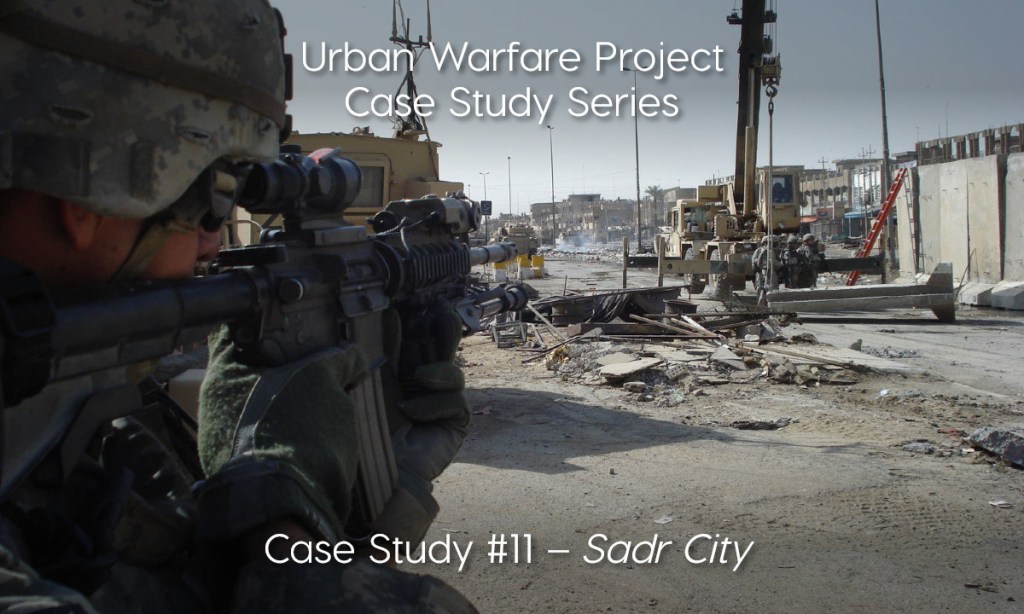In 2008, a surge in violence from an Iraqi militia called the Jaysh al-Mahdi—better known to coalition forces as JAM—broke out in Baghdad. It was, in part, a response to an Iraqi military offensive against the group’s fighters in the southern city of Basra. For months, attacks with improvised explosive devices and other weapons had dropped precipitously in the Iraqi capital. Suddenly, that trend had reversed, with the number of violent incidents tripling in the area of eastern Baghdad assigned to 3rd Brigade Combat Team, 4th Infantry Division. The militia also increased its deadly rocket attacks against government and coalition sites in the heavily fortified Green Zone.
For the US forces and their Iraqi partners working to provide security in the city, something had to be done. The largest challenge, however, was that an agreement between Iraq’s government and the influential cleric Muqtada al-Sadr prohibited US forces from entering JAM’s stronghold of Sadr City, a densely packed neighborhood that was thus a safe haven for the militia. How is it possible for a military force to defeat an enemy in an urban area that it is not allowed to enter? That was the challenge that faced US commanders in 2008. Their solution is a source of important lessons.

The eleventh installment of the Urban Warfare Project Case Study Series unpacks those lessons. Despite the limitations they faced during the Battle of Sadr City, US forces and their Iraqi partners managed to stem JAM violence, deal a heavy blow to the militia’s capabilities, and strengthen the Iraqi government’s position in this critical portion of the capital city. The battle offers important insights at all three levels of war—tactical, operational, and strategic. This case study identifies and examines those insights. You can read it here, and be sure to follow the Urban Warfare Project for future case studies and regular exploration of the challenges faced by military forces operating in cities.
John Spencer is chair of urban warfare studies at the Modern War Institute, codirector of MWI’s Urban Warfare Project, and host of the Urban Warfare Project Podcast. He served twenty-five years as an infantry soldier, which included two combat tours in Iraq. He is the author of the book Connected Soldiers: Life, Leadership, and Social Connections in Modern War and coauthor of Understanding Urban Warfare.
Liam Collins, PhD was the founding director of the Modern War Institute at West Point and a Fellow at New America. He is a retired Special Forces colonel with deployments to Iraq, Afghanistan, Bosnia, the Horn of Africa, and South America, with multiple combat operations in Fallujah in 2004. He is coauthor of Understanding Urban Warfare.
Major Jayson Geroux is an infantry officer with The Royal Canadian Regiment and is currently with the Canadian Army Doctrine and Training Centre. He has been a fervent student of and has been involved in urban operations training for over two decades. He is an equally passionate military historian and has participated in, planned, executed, and intensively instructed on urban operations and urban warfare history for the past ten years. He has served twenty-nine years in the Canadian Armed Forces, which included operational tours to the former Yugoslavia (Bosnia-Herzegovina) and Afghanistan.
The views expressed are those of the authors and do not reflect the official position of the United States Military Academy, Department of the Army, or Department of Defense, or that of any organization with which the authors are affiliated, including the Canadian Army Doctrine and Training Centre, the Canadian Armed Forces and the Canadian Department of National Defence.
Image credit: Lt. Col. Steve Stover, US Army

